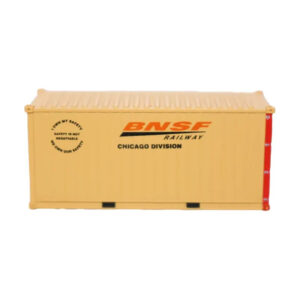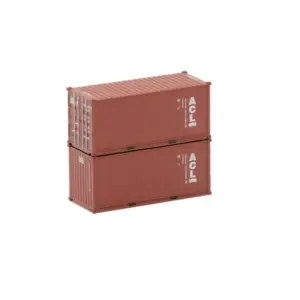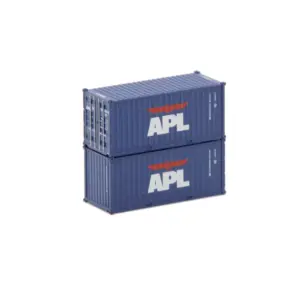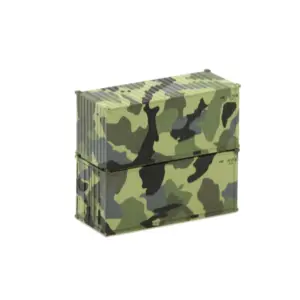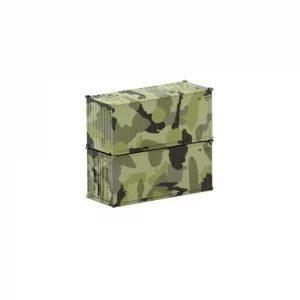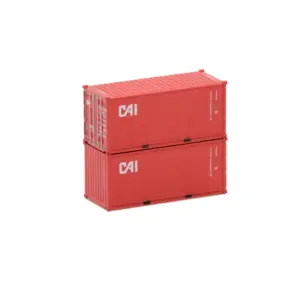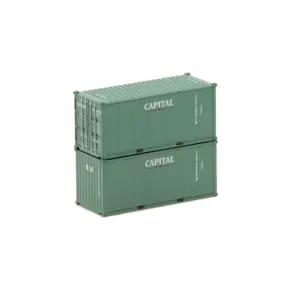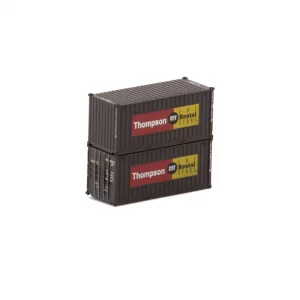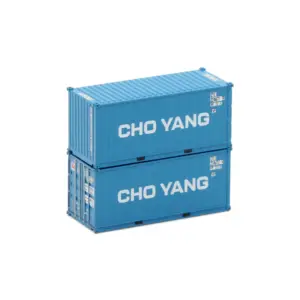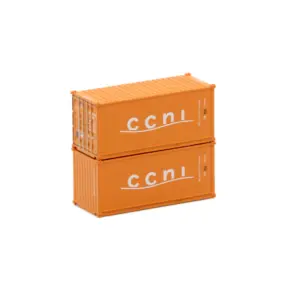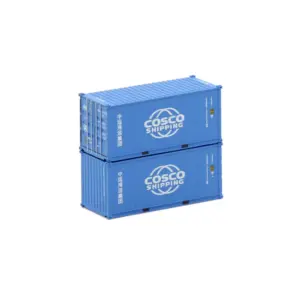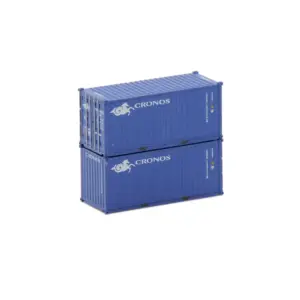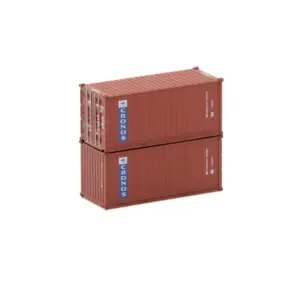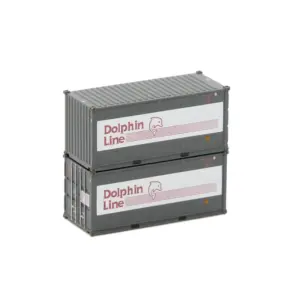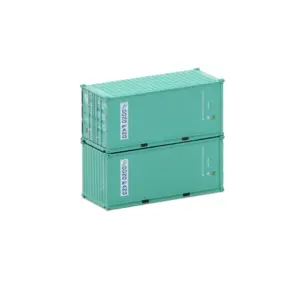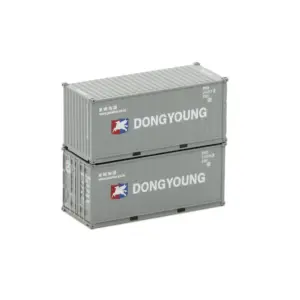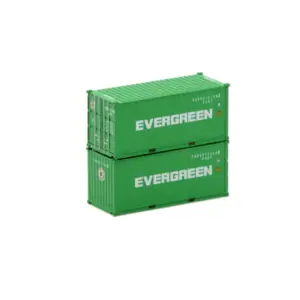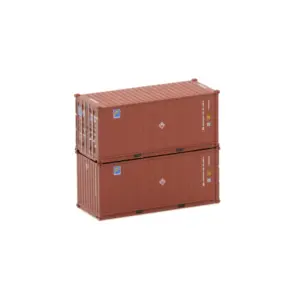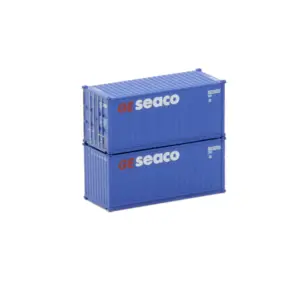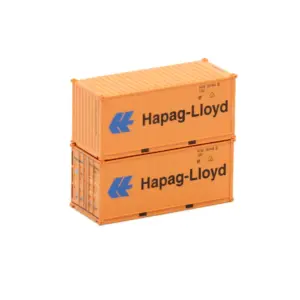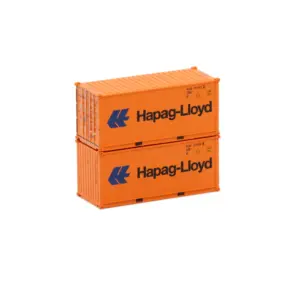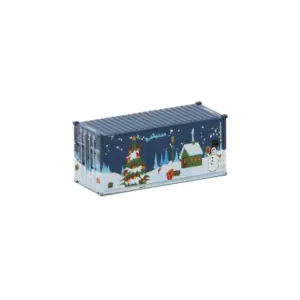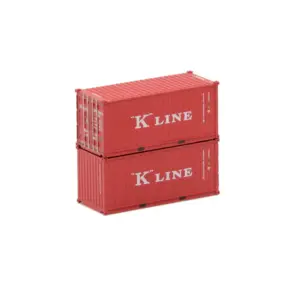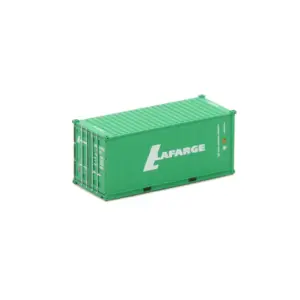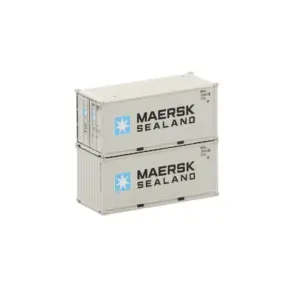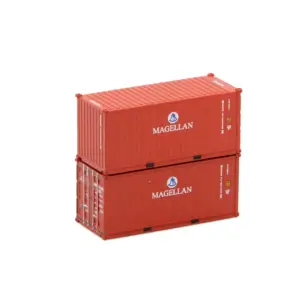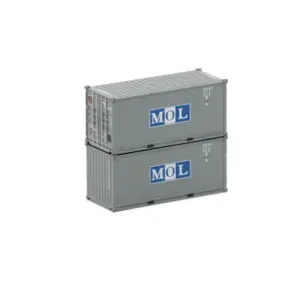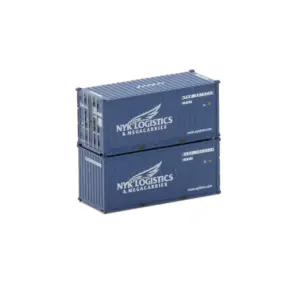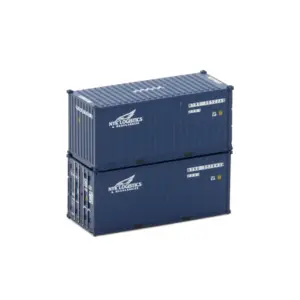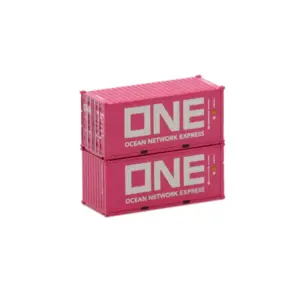20' Container
Prototype Information
The 20-foot container, or TEU (Twenty-foot Equivalent Unit), started changing the shipping industry in 1956 when Malcolm McLean, a former trucker turned entrepreneur, loaded 58 metal containers onto the Ideal X, a converted oil tanker. Instead of unloading cargo piece by piece, dockworkers could now lift entire containers straight onto ships, slashing port time and costs.
McLean’s idea caught on fast. By the late 1960s, international regulators formalized the 20-foot container as part of the ISO 668 standard. That move locked in its dimensions and made it the core unit for global intermodal transport. Ports, trucks, trains, and ships across the world adjusted to handle it, setting the stage for the modern shipping network.
Even as 40-foot containers gained ground in the 1970s and 1980s for carrying larger volumes, the 20-footer held its place. It handles dense, heavy cargo better and works well in places where space is tight or infrastructure is limited. Shippers still rely on it today for everything from machinery to bulk commodities.
The 20-foot container didn’t just move goods—it reshaped global trade. It created a language for shipping efficiency, and even now, it remains a standard measure of cargo capacity and a key tool in global logistics.
Showing 1–36 of 59 results
-

Jacksonville Terminal N 20′ Container BNSF “Chicago Division”
$24.00 Add to cart -

Jacksonville Terminal N 20′ Standard Height Corrugated Container ACL “Atlantic Container Line”
$24.00 Select options This product has multiple variants. The options may be chosen on the product page -

Jacksonville Terminal N 20′ Standard Height Corrugated Container American Red Cross
$26.00 Add to cart -

Jacksonville Terminal N 20′ Standard Height Corrugated Container APL
$24.00 Select options This product has multiple variants. The options may be chosen on the product page -

Jacksonville Terminal N 20′ Standard Height Corrugated Container APMU “Camo A Scheme”
$24.00 Select options This product has multiple variants. The options may be chosen on the product page -

Jacksonville Terminal N 20′ Standard Height Corrugated Container APMU “Camo B Scheme”
$24.00 Select options This product has multiple variants. The options may be chosen on the product page -

Jacksonville Terminal N 20′ Standard Height Corrugated Container Beacon
$24.00 Select options This product has multiple variants. The options may be chosen on the product page -

Jacksonville Terminal N 20′ Standard Height Corrugated Container CAI
$24.00 Select options This product has multiple variants. The options may be chosen on the product page -

Jacksonville Terminal N 20′ Standard Height Corrugated Container Captial
$24.00 Select options This product has multiple variants. The options may be chosen on the product page -

Jacksonville Terminal N 20′ Standard Height Corrugated Container CAT Rental Store
$24.00 Select options This product has multiple variants. The options may be chosen on the product page -

Jacksonville Terminal N 20′ Standard Height Corrugated Container Cho Yang
$24.00 Select options This product has multiple variants. The options may be chosen on the product page -

Jacksonville Terminal N 20′ Standard Height Corrugated Container Clinic In A Can
$24.00 Add to cart -

Jacksonville Terminal N 20′ Standard Height Corrugated Container Compañía Chilena de Navegación Interoceánica (CCNI)
$24.00 Select options This product has multiple variants. The options may be chosen on the product page -

Jacksonville Terminal N 20′ Standard Height Corrugated Container Cosco
$24.00 Select options This product has multiple variants. The options may be chosen on the product page -

Jacksonville Terminal N 20′ Standard Height Corrugated Container Cronos “Blue”
$24.00 Select options This product has multiple variants. The options may be chosen on the product page -

Jacksonville Terminal N 20′ Standard Height Corrugated Container Cronos “Brown”
$24.00 Select options This product has multiple variants. The options may be chosen on the product page -

Jacksonville Terminal N 20′ Standard Height Corrugated Container Dolphin Line
$24.00 Select options This product has multiple variants. The options may be chosen on the product page -

Jacksonville Terminal N 20′ Standard Height Corrugated Container Dong Fang
$24.00 Select options This product has multiple variants. The options may be chosen on the product page -

Jacksonville Terminal N 20′ Standard Height Corrugated Container Dong Young
$24.00 Select options This product has multiple variants. The options may be chosen on the product page -

Jacksonville Terminal N 20′ Standard Height Corrugated Container Evergreen
$24.00 Select options This product has multiple variants. The options may be chosen on the product page -

Jacksonville Terminal N 20′ Standard Height Corrugated Container Florens
$24.00 Select options This product has multiple variants. The options may be chosen on the product page -

Jacksonville Terminal N 20′ Standard Height Corrugated Container Gateway
$24.00 Select options This product has multiple variants. The options may be chosen on the product page -

Jacksonville Terminal N 20′ Standard Height Corrugated Container GESeaco
$24.00 Select options This product has multiple variants. The options may be chosen on the product page -

Jacksonville Terminal N 20′ Standard Height Corrugated Container Hanjin
$24.00 Select options This product has multiple variants. The options may be chosen on the product page -

Jacksonville Terminal N 20′ Standard Height Corrugated Container Hapag Lloyd “Faded”
$24.00 Select options This product has multiple variants. The options may be chosen on the product page -

Jacksonville Terminal N 20′ Standard Height Corrugated Container Hapag Llyod
$24.00 Select options This product has multiple variants. The options may be chosen on the product page -

Jacksonville Terminal N 20′ Standard Height Corrugated Container Home Depot “Paint Splash”
$15.00 Add to cart -

Jacksonville Terminal N 20′ Standard Height Corrugated Container JTC 2019 Holiday
$15.00 Add to cart -

Jacksonville Terminal N 20′ Standard Height Corrugated Container K Line
$24.00 Select options This product has multiple variants. The options may be chosen on the product page -

Jacksonville Terminal N 20′ Standard Height Corrugated Container Lafarge “Fantasy”
$12.00 Add to cart -

Jacksonville Terminal N 20′ Standard Height Corrugated Container Maersk Sealand
$24.00 Select options This product has multiple variants. The options may be chosen on the product page -

Jacksonville Terminal N 20′ Standard Height Corrugated Container Magellan
$24.00 Select options This product has multiple variants. The options may be chosen on the product page -

Jacksonville Terminal N 20′ Standard Height Corrugated Container MOL
$24.00 Select options This product has multiple variants. The options may be chosen on the product page -

Jacksonville Terminal N 20′ Standard Height Corrugated Container NYK Logistics
$24.00 Select options This product has multiple variants. The options may be chosen on the product page -

Jacksonville Terminal N 20′ Standard Height Corrugated Container NYK Logistics “Small Logo”
$24.00 Select options This product has multiple variants. The options may be chosen on the product page -

Jacksonville Terminal N 20′ Standard Height Corrugated Container Ocean Network Express
$24.00 Select options This product has multiple variants. The options may be chosen on the product page


